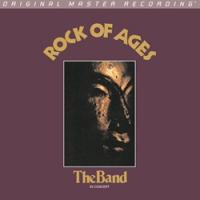I was with you until you wrote, "The cymbals may be slightly more present and extended on the original..." I am a fan of a number of recent (and not-so-recent) MoFi reissues, but some of them have been extremely wanting for this reason. I thought the reissue of Live/Dead was appalling -- it sounds like someone threw a blanket over my speakers, and Garcia's guitar, which was so upfront and searing on the original, became distant and recessed on the MoFi. If the tapes were that bad, I say they should have just skipped it. Is this Band reissue better? I doubt I'll find out, since originals are plentiful, at least in the used stores around here, for about $5.
Not a slam on MoFi -- as I said, they can be amazing. The recent Stevie Wonder "Talking Book" is a good example. But they can't make highs reappear that have been ravaged by time.









